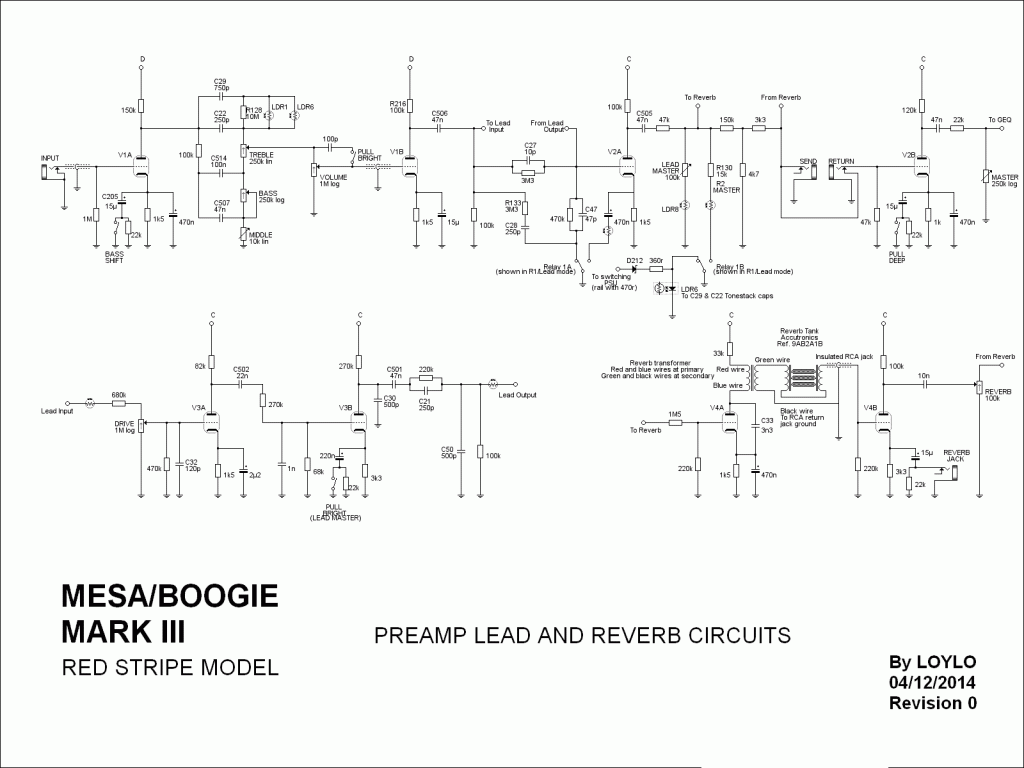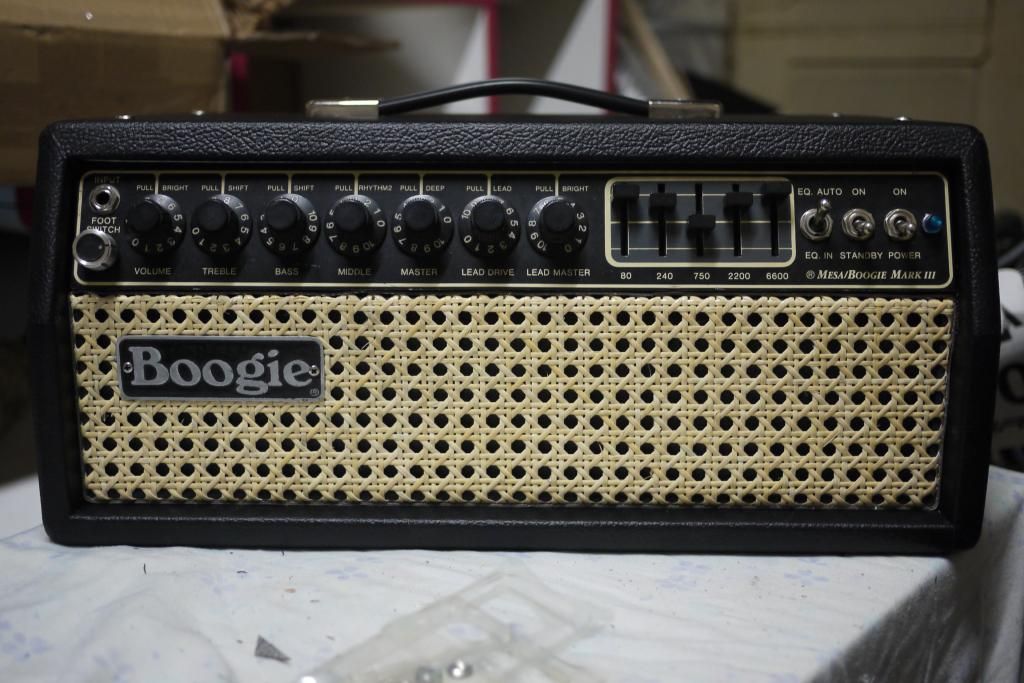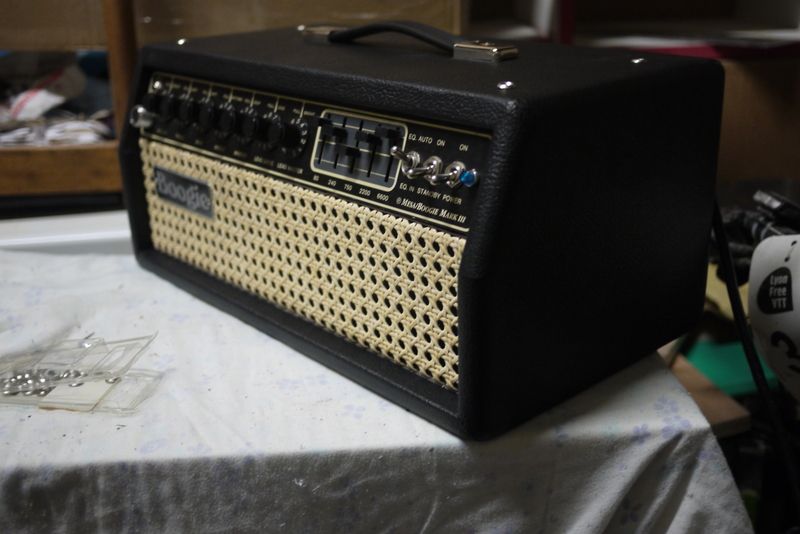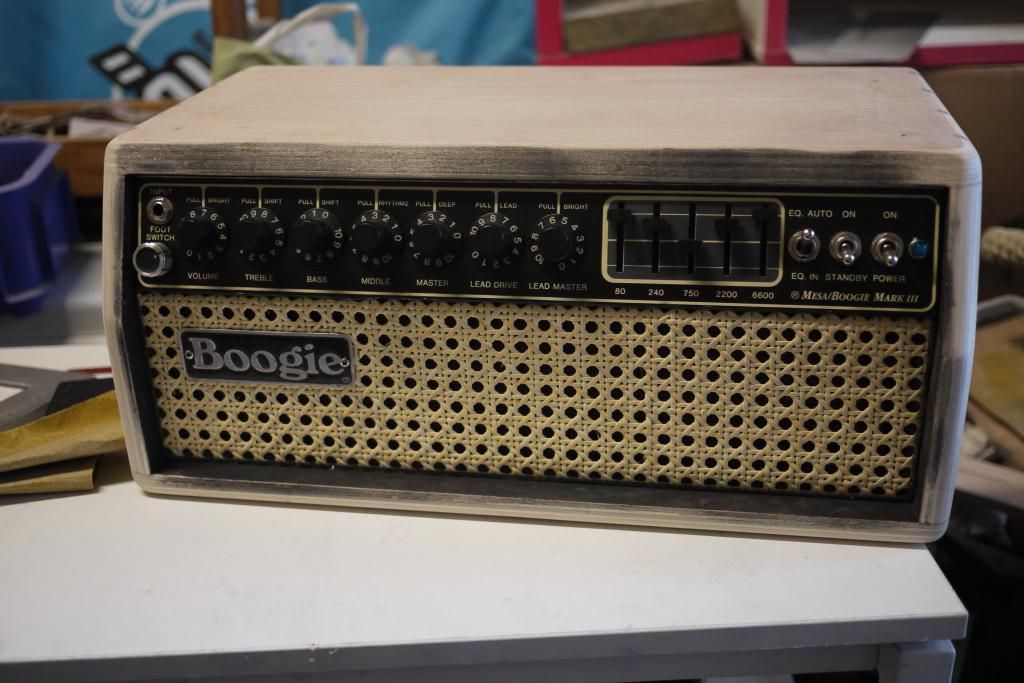Hi!
I am a happy french owner of a Mark III red stripe combo, fully loaded with reverb, GEQ, simulclass and an EVM12L.
I bought it 2 years ago at a quite cheap price because the lead channel wasn't working.
I repaired it, a Vactrol LDR responsible of the channel switching was dead.
It gave me the chance to trace the circuit. The factory schematic of the black dot/stripe version aside, the other schematics I sourced on the internet seemed a bit wrong to me, specially the purple stripe version I found at sloclone forums. The blue stripe version that can be found here at the boogie board is way better, but I am not sure the R2 channel has been correctly traced.
I was able to lift up the circuit board and desolder the relay which hides some of the traces of the R2 circuit, so I feel confident that my red stripe schematic is pretty accurate.
First here are the preamp/lead/reverb sections. I still need to trace the poweramp and the power supply, so I'll upload an update of the schematic later.
I'd also like to compile the variations of the other stripes version on my schematic. I'll see if I can do it.
At last, I'd try to propose some mods that are my interpretation of the III+ mod, III++ mod, vol1.1 mod...

I am a happy french owner of a Mark III red stripe combo, fully loaded with reverb, GEQ, simulclass and an EVM12L.
I bought it 2 years ago at a quite cheap price because the lead channel wasn't working.
I repaired it, a Vactrol LDR responsible of the channel switching was dead.
It gave me the chance to trace the circuit. The factory schematic of the black dot/stripe version aside, the other schematics I sourced on the internet seemed a bit wrong to me, specially the purple stripe version I found at sloclone forums. The blue stripe version that can be found here at the boogie board is way better, but I am not sure the R2 channel has been correctly traced.
I was able to lift up the circuit board and desolder the relay which hides some of the traces of the R2 circuit, so I feel confident that my red stripe schematic is pretty accurate.
First here are the preamp/lead/reverb sections. I still need to trace the poweramp and the power supply, so I'll upload an update of the schematic later.
I'd also like to compile the variations of the other stripes version on my schematic. I'll see if I can do it.
At last, I'd try to propose some mods that are my interpretation of the III+ mod, III++ mod, vol1.1 mod...

























